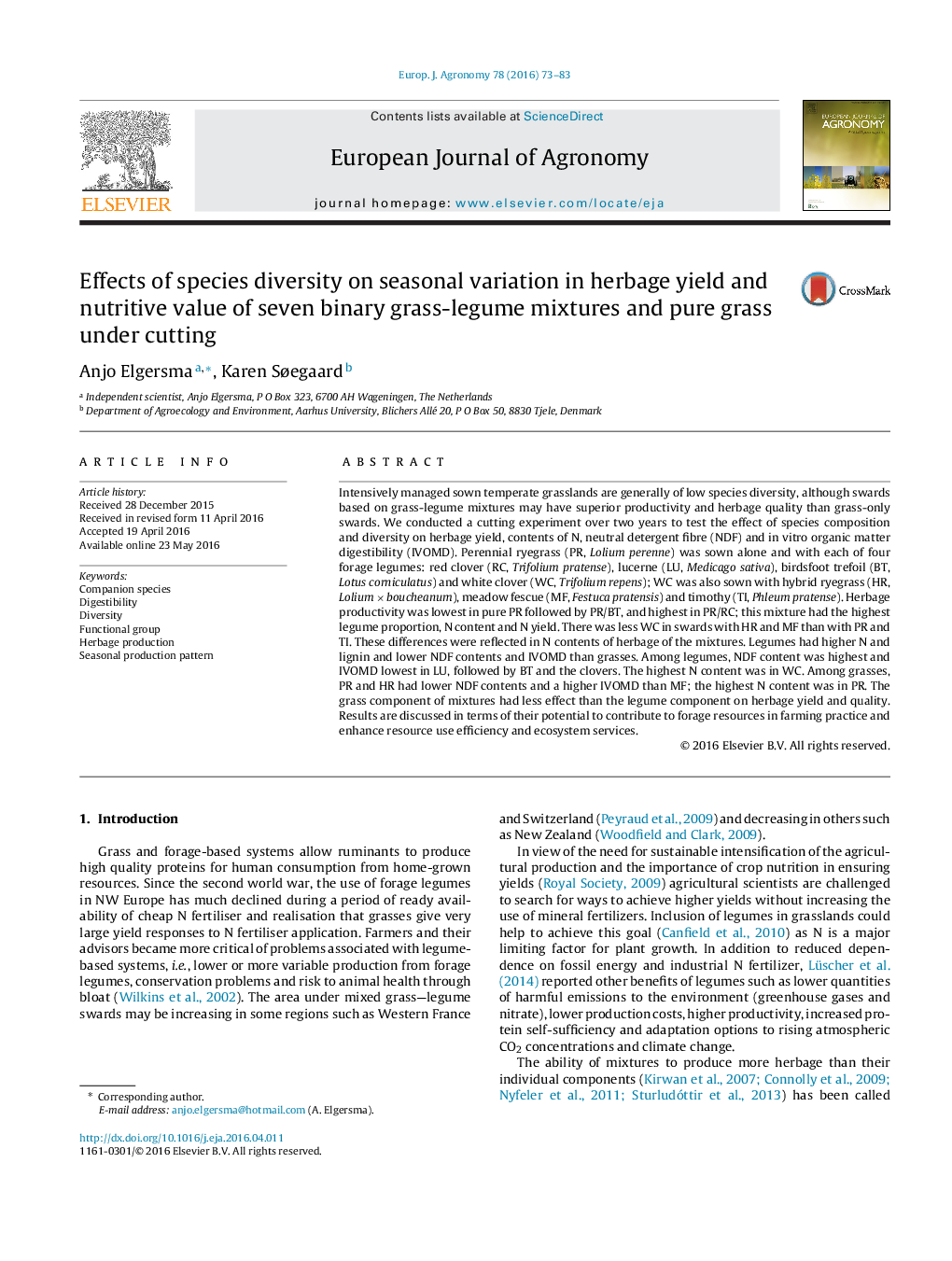| Article ID | Journal | Published Year | Pages | File Type |
|---|---|---|---|---|
| 4508679 | European Journal of Agronomy | 2016 | 11 Pages |
•Mixing perennial ryegrass with a legume enhanced forage yield and nutritive value, even with slurry application of 300 kg N ha −1.•Swards with perennial ryegrass or timothy contained more white clover than with hybrid ryegrass or meadow fescue.•The seasonal white clover production pattern was similar irrespective of companion grass species.•Companion grass had less effects on mixture herbage yield and quality than companion legume.•The red clover mixture yielded most herbage and N and may be best suited in view of global temperature rise.
Intensively managed sown temperate grasslands are generally of low species diversity, although swards based on grass-legume mixtures may have superior productivity and herbage quality than grass-only swards. We conducted a cutting experiment over two years to test the effect of species composition and diversity on herbage yield, contents of N, neutral detergent fibre (NDF) and in vitro organic matter digestibility (IVOMD). Perennial ryegrass (PR, Lolium perenne) was sown alone and with each of four forage legumes: red clover (RC, Trifolium pratense), lucerne (LU, Medicago sativa), birdsfoot trefoil (BT, Lotus corniculatus) and white clover (WC, Trifolium repens); WC was also sown with hybrid ryegrass (HR, Lolium × boucheanum), meadow fescue (MF, Festuca pratensis) and timothy (TI, Phleum pratense). Herbage productivity was lowest in pure PR followed by PR/BT, and highest in PR/RC; this mixture had the highest legume proportion, N content and N yield. There was less WC in swards with HR and MF than with PR and TI. These differences were reflected in N contents of herbage of the mixtures. Legumes had higher N and lignin and lower NDF contents and IVOMD than grasses. Among legumes, NDF content was highest and IVOMD lowest in LU, followed by BT and the clovers. The highest N content was in WC. Among grasses, PR and HR had lower NDF contents and a higher IVOMD than MF; the highest N content was in PR. The grass component of mixtures had less effect than the legume component on herbage yield and quality. Results are discussed in terms of their potential to contribute to forage resources in farming practice and enhance resource use efficiency and ecosystem services.
Graphical abstractYield and chemical composition (ash, crude protein, fibre and other compounds) of grass-legume mixtures and pure grass during 5 harvests from May until October, showing:-Higher yields in mixtures than in pure grass.-Contrasts between legumes and similarities between grass species.-Seasonal variation in yield and chemical composition among harvests.PR = perennial ryegrass, WC = white clover, RC = red clover, LU = lucerne, BT = birdsfoot trefoil, TI = timothy, MF = meadow fescue, HR = hybrid ryegrass.Figure optionsDownload full-size imageDownload as PowerPoint slide
